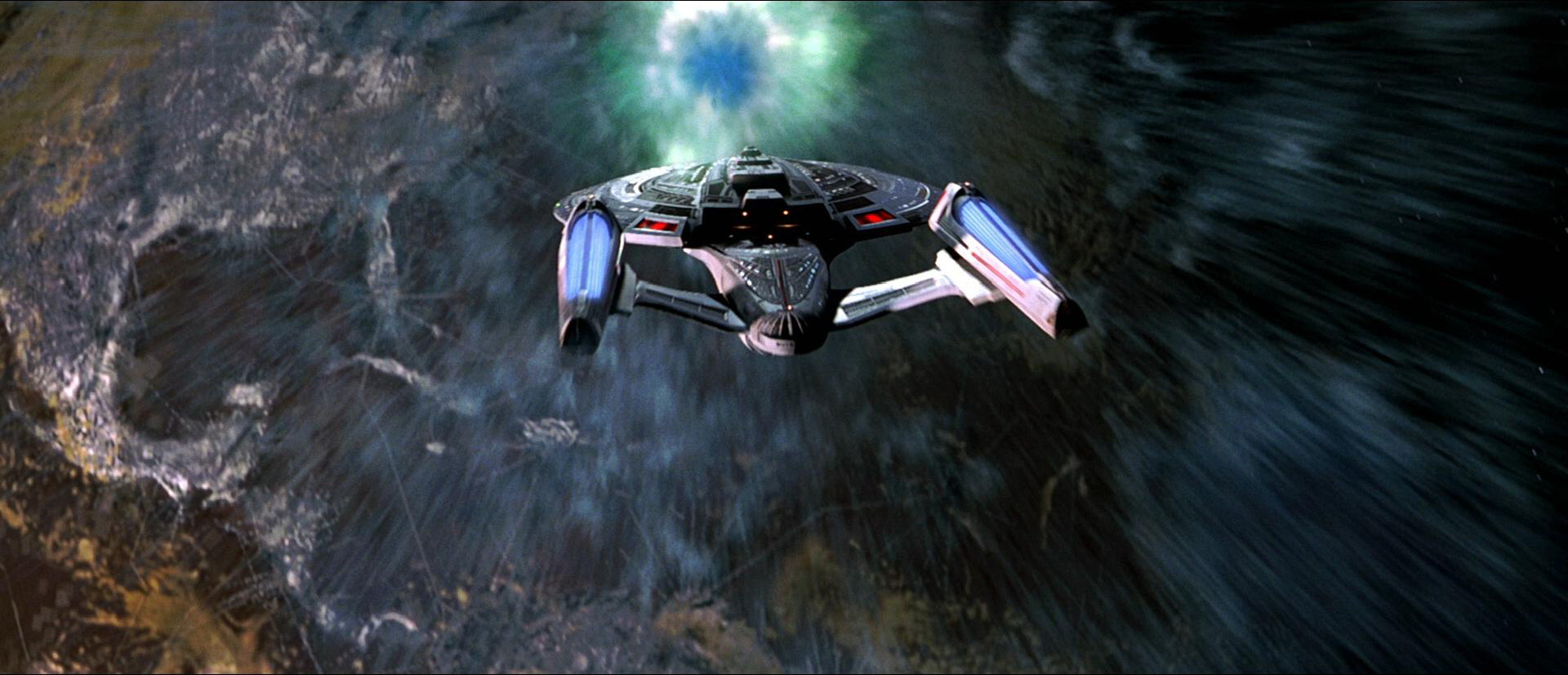A team of physicists has discovered that it’s possible to build a real, actual, physical warp drive and not break any known rules of physics. One caveat: the vessel doing the warping can’t exceed the speed of light, so you’re not going to get anywhere interesting any time soon. But this research still represents an important advance in our understanding of gravity.
Moving without motion
Einstein’s general theory of relativity is a toolkit for solving problems involving gravity that connects mass and energy with deformations in spacetime. In turn, those spacetime deformations instruct the mass and energy how to move. In almost all cases, physicists use the equations of relativity to figure out how a particular combination of objects will move. They have some physical scenario, like a planet orbiting a star or two black holes colliding, and they ask how those objects deform spacetime and what the subsequent evolution of the system should be.
But it’s also possible to run Einstein’s math in reverse by imagining some desired motion and asking what kind of spacetime deformation can make it possible. This is how the Mexican physicist Miguel Alcubierre discovered the physical basis for a warp drive—long a staple of the Star Trek franchise.
The goal of a warp drive is to get from A to B in the time between commercial breaks, which typically involves faster-than-light motion. But special relativity expressly forbids speeds faster than light. While this never bothered the writers of Star Trek, it did irritate Alcubierre. He discovered that it was possible to build a warp drive through a clever manipulation of spacetime, arranging it so that space in front of a vessel gets scrunched up and the space behind the vessel stretched out. This generates motion without, strictly speaking, movement.
It sounds like a contradiction, but that’s just one of the many wonderful aspects of general relativity. Alcubierre’s warp drive avoids violations of the speed-of-light limit because it never moves through space; instead space itself is manipulated to, in essence, bring the spacecraft’s destination closer to it.
While tantalizing, Alcubierre’s design has a fatal flaw. To provide the necessary distortions of spacetime, the spacecraft must contain some form of exotic matter, typically regarded as matter with negative mass. Negative mass has some conceptual problems that seem to defy our understanding of physics, like the possibility that if you kick a ball that weighs negative 5 kilograms, it will go flying backwards, violating conservation of momentum. Plus, nobody has ever seen any object with negative mass existing in the real Universe, ever.
These problems with negative mass have led physicists to propose various versions of “energy conditions” as supplements to general relativity. These aren’t baked into relativity itself, but add-ons needed because general relativity allows things like negative mass that don’t appear to exist in our Universe—these energy conditions keep them out of relativity’s equations. They’re scientists’ response to the unsettling fact that vanilla GR allows for things like superluminal motion, but the rest of the Universe doesn’t seem to agree.
Warp factor zero
The energy conditions aren’t experimentally or observationally proven, but they are statements that concord with all observations of the Universe, so most physicists take them rather seriously. And until recently, physicists have viewed those energy conditions as making it absolutely 100 percent clear that you can’t build a warp drive, even if you really wanted to.
But there is a way around it, discovered by an international team of physicists led by Jared Fuchs at the University of Alabama in Huntsville. (The team is also affiliated with the Applied Propulsion Laboratory of Applied Physics, a virtual think tank dedicated to the research of, among many other things, warp drives.) In a paper accepted for publication in the journal Classical and Quantum Gravity, the researchers dug deep into relativity to explore if any version of a warp drive could work.
The equations of general relativity are notoriously difficult to solve, especially in complex cases such as a warp drive. So the team turned to software algorithms; instead of trying to solve the equations by hand, they explored their solutions numerically and verified that they conformed to the energy conditions.
The team did not actually attempt to construct a propulsion device. Instead, they explored various solutions to general relativity that would allow travel from point to point without a vessel undergoing any acceleration or experiencing any overwhelming gravitational tidal forces within the vessel, much to the comfort of any imagined passengers. They then checked whether these solutions adhered to the energy conditions that prevent the use of exotic matter.
The researchers did indeed discover a warp drive solution: a method of manipulating space so that travelers can move without accelerating. There is no such thing as a free lunch, however, and the physicality of this warp drive does come with a major caveat: the vessel and passengers can never travel faster than light. Also disappointing: the fact that the researchers behind the new work don’t seem to bother with figuring out what configurations of matter would allow the warping to happen.



3175x175(CURRENT).thumb.jpg.b05acc060982b36f5891ba728e6d953c.jpg)

Recommended Comments
There are no comments to display.
Join the conversation
You can post now and register later. If you have an account, sign in now to post with your account.
Note: Your post will require moderator approval before it will be visible.